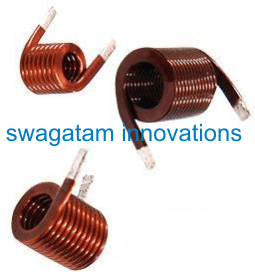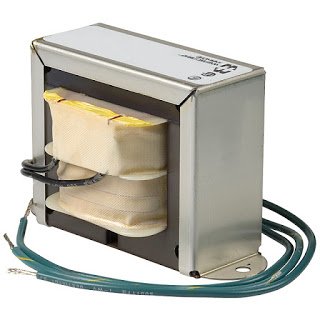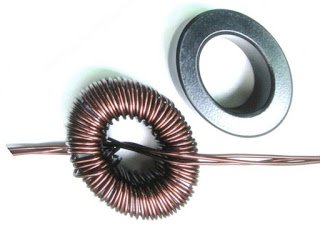The electronics industry uses various different styles and types of inductors. Inductors are used in a circuit in order to perform many functions of various different styles.
By: S. Prakash
Some of the functions which are carried out by some types of the inductors in a circuit are removal and filtering of the spikes present on the power lines.
On the other hand, the high performance filters use the other types of inductors.
Also, there are other types of inductors which are used in various other areas such as within oscillators.
This has resulted in the manufacturing and availability of inductors in various types.
The factors which majorly act as determining factors on the basis of which the inductors of different types are differentiated include value, size, current, and frequency, among other hoard of factors.

Basics of the Inductors
The laws of nature which all the inductor types follow basically is same irrespective of their being of different types or having different features.
Each and every inductor has the basic nature of surrounding the conductor by setting up a field of magnetic field.
Additionally, all the inductors possess reactance to a certain amount.
The inductors use these basic parameters irrespective of their being of different types or having different features.
Note: The electrical and electronic circuits are affected by one basic factor which is inductance. The specific amount of the inductance which is associated with a coil or a wire is due to the set up of the magnetic field around it when there is a flow of current.
This results in the storage of the energy in the magnetic field which results in the coil acting to produce a resistance to the changes which are observed in the coil or the conductor.
Cores of the Inductor
The shape in which the inductors are generally manufactured is in the “coiled shape”.
The inductors are manufactured in the coiled form since there is a linkage of the magnetic field with the gap between the builds up and the windings.
The manufacturing of the inductors which possesses large amount of inductance capacity is an easier process.
The inductance of the inductor is majorly effected by the medium’s permeability wherein the coil is placed and thereby a core is used which runs down the coil through its center.
The materials which are used for the core include magnetic materials such as ferrite and iron.
Thus, there is an increase in the inductance level which is possible to be obtained through this.
But one must take care while selecting the core which will be used since it should be suitable to provide a high performance at the given level of frequency, power, and the inductor’s general application.
Inductor Cores and its different types
There is a large variety of inductors available in the industry similar to other component types like capacitors.
But a difficulty maybe faced in defining the inductor types in exact manner since the applications for which the inductors are used are of large variety.
The inductors can be possibly defined through the type of their core material and are thus used for categorizing the inductors and define them in basic form.
But it should be noted that this is not the lone way of categorizing the inductors but are used at a large scale.
Air Cored Inductor: The RF applications such as radio transmitters and receivers generally use the air coiled inductor since these applications require a very small level of inductance.

There are many advantages which are brought forth by this inductor because of the absence of a coil.
One of the advantages is that there is absence of any loss from the core since it is made up of only air which cannot be lost which in turn produces Q of very high level given that the resistance of the coil or the inductor is of low level.
Against this phenomenon, the increase in the physical size of the inductor can be observed since the turns which are present the coil is higher in number and larger also which enables it to gain the inductance of same level.
Iron Cored Inductor: The inductors which require high inductance capacity and high power generally use the iron cores.

An iron laminate may be used by some of the chokes or the audio coils. In general there is very limited use of this type of inductors.
Ferrite Cored inductor: There are a large variety of inductor types which widely use ferrite as the material for their core.
Ferrite is a form of metal oxide ceramic and it is Ferric Oxide (Fe2O3) around which it is based along with the extrusion or pressing of the nickel-zinc oxides or alternatively the manganese-zinc oxides into the shape which is required.
Iron Powder Inductor: There are also a large variety of inductor types which widely use iron powder as the material for their core.
Similar to the core ferrite, the inductor with iron powder as their core enables the manufacturing of the inductors or inductance coils of very high inductance in a considerably small space by providing elevating the permeability significantly.
Mechanical Inductor Types and their applications
Another way apart from the coil type which can be used to categorize the inductors is on the basis of the mechanical construction of the inductors. The various types of the standards used to differentiate the inductors are:
Bobbin based Inductor: In the bobbin based inductor, there is a bobbin of cylindrical shape around which the inductor is wound.
The bobbin based inductor is designed such that they can be used for the mounting of the printed circuit board.
This inductor can also be used for the surface mounting but the drawback is that their size may be larger and thus they will be required to be mounted through the use of other means which are mechanical in nature.
There are some versions of the bobbin based inductor which are older and can be found to have similarity in terms of the format when compared to the normal leaded resistors.
Toroidal Inductor: A circular former is used in this inductor which is also known asteroid around which the inductor is wounded.

In order to increase the core’s permeability the toroidal inductor uses ferrite to make the circular former.
One of the advantages which is achieved by using the toroid is that the latter enables the travelling of the magnetic flux around itself in a circular manner which results in a very low leakage of the flux.
One of the disadvantages which is observed in the toroidal inductor is that there is an additional requirement of a winding machine specially in order to complete the manufacturing process since the at each of the turn it is required that through the toroid, the wire needs to be passed.
Multilayer Ceramic Inductor: The technology for which the multilayer ceramic inductor is used at a wide scale is the surface mount technology.
The manufacturing of the inductor is commonly done by using the material of magnetic ceramic such as ferrite.
The ceramic’s body contains the coil and this is in turn presented on the end caps at the external circuit. This process is very similar to the one followed in the chip capacitors.
Film Inductors: The base material which is used in the film inductors is a film of conductor. Thereafter the profile of the conductor which is required is given by shaping or etching the film.
Thus, according to the above discussion, it is clear that there are a number of ways in which an inductor can be classified.
Each of the classification set has advantages of its own and thus it is quintessential that the while selecting any of the classification categories, one needs to consider the application for which the inductor is required.
The use of the modern materials in the manufacturing of the inductors has ensured the high performance of the inductors significantly.
At the same time, there are many more avenues available to the designers of the circuits including the applications such as power applications, combating EMI, and RF applications.